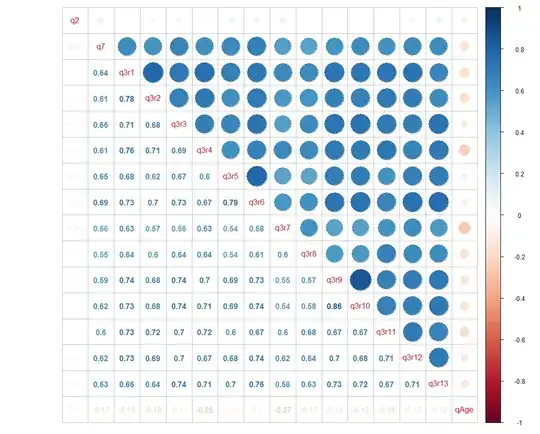My dataset consists of ordinal and nominal variables for independent variables and an ordinal variable for the dependent variable. I have been trying to get odds ratios using the coefficients of independent variables to interpret their impact on the dependent variable. However, there is a strong multicollinearity among ordinal variables. Please find the correlation matrix attached. 
I have read two related posts. But, I am not sure how to deal with it. I think I cannot remove all of them except a few. My current option could be using LASSO to penalize the variables based on this answer. Any help is appreciated.